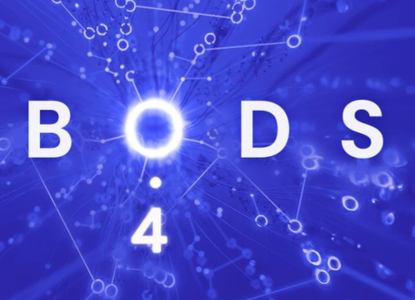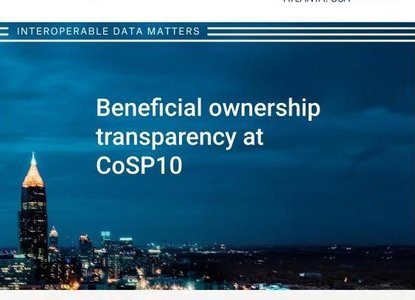Plans for the Open Ownership Register in 2021

The Open Ownership Register (OOR) holds 12 million records with data from 200 jurisdictions. Because Open Ownership (OO) has been engaging with more countries and assisting them with publishing their beneficial ownership (BO) data, the amount of information in the register has been growing.
More and new types of data means it is time to update the Beneficial Ownership Data Standard (BODS). The standard comes to life in the register by classifying and sorting the information so that users can find and analyse the data.
Updating BODS is an ongoing process. It is informed primarily by the experience of OO’s technical and country teams as they engage with 40+ countries on their beneficial ownership transparency (BOT) implementation journey. In 2021, the first country in the world, Latvia, is expected to publish their beneficial ownership (BO) data in BODS format. Armenia is close behind.
Further afield, OO has received multiple requests from countries and partners on how to account for particular types of companies: for example, officials in Ghana have sought advice on how to account for publicly listed companies (PLCs). OO’s partners at the Extractive Industries Transparency Initiative (EITI) and the Open Contracting Partnership (OCP) both operate in sectors where state-owned enterprise (SOE) transparency is critical for good governance. Both PLCs and SOEs are frontier issues for BOT, and in 2021 it is OO’s aim for these to be added to BODS and the OOR. OO also aims to ensure that the OOR and BODS remain useful resources for the growing number of governments, companies, and people that routinely use them.
1. Dealing with fresh and stale data
Confidence in the quality of BO data relies in part on knowing whether it is fresh or stale. Data is fresh when it is new or recently confirmed as accurate - and it is stale when it hasn’t been updated. This is difficult because as BO registers mature they will accumulate more and more data, either as ownership changes or as companies resubmit their data. For users to navigate BO data with confidence, registers need the right tools to be explicit about what data is current, what data is stale, and when a historical statement of ownership begins and ends.
To make this task easier for publishers, OO will clarify and document how to record changes using BODS. New functionality will also be built to better reflect the legal and practical requirements to redact ownership data or mark it as stale. Deciding which data to archive and which can safely be removed is important for a well functioning register. Registers also need to remove secure or sensitive information from records, and provide an explanation for why that information is unavailable.
2. Defining interest
In the world of BO, “interest” covers all manner of ways in which a person or entity can exercise ownership and control over a company. Engaging with countries and systems around the world has helped OO uncover a dizzying array of legal instruments that allow owners to exercise their interest. This is unsurprising because the legal systems of countries differ greatly based on history and context, and BO laws and regulations are emerging at pace. OO will spend time in 2021 documenting and modelling the ways in which people can exercise their ownership or control, and add these to BODS and the OOR.
3. What about publicly listed companies?
Until recently, the focus for BOT has been on private companies, with the presumption that information about companies publicly listed on stock exchanges is already freely available. Because of this, in many jurisdictions, PLCs are exempt from the type of BO declaration required of private companies. However, not all stock exchanges have the same disclosure regimes. When a company reports that it is exempt from BO disclosure on the basis that it is a PLC, the information collected about it is generally unstandardised and of poor quality. This makes it hard to reach market information that would help clarify the BO picture. In 2020, OO published a tech note on how the overlooked issue of PLCs could be handled. As a first step towards implementing some of the recommendations in the tech note, OO plans to start adding classifications and identifying information to stock market disclosures for PLCs into the BODS.
4. What about state-owned enterprises?
Another type of company – one that has only grown in importance and size during the COVID-19 pandemic – are SOEs. Around the world, many states have announced plans to protect strategic industries. They have initiated rescue packages that include the state taking an ownership stake directly or via debt that will convert to equity. In short, the number of SOEs and their associated mismanagement risks are growing. BO registers are an obvious solution for identifying and monitoring the state ownership of companies. OO will be testing this solution by adding SOE classifications and identifying information for states and state entities to BODS. This will enable the OOR to list this information, and allow direct declaration and determination of state ownership. This is particularly relevant for OO’s joint programme with the EITI, Opening Extractives (OE), as many projects in the oil, gas, and mining sectors are owned by joint ventures between government and companies.
5. And finally: Cracking open black holes
One of the main motivations for moving BO data to a central register is to avoid a company being a “black hole” for information. The same principle applies once companies are submitting data to a register, and is particularly relevant when ownership data is missing. There are a number of reasons why BO data might be missing from a register, including: a failure to submit by a company; a company being unable to verify the identity of a beneficial owner; a legitimate exemption from disclosure; or a redaction on security grounds. All of these reasons provide valuable, but very different, information for users trying to understand risk or make business decisions. These scenarios can already be modelled in BODS, but OO will be restructuring the standard to make this easier and clearer. OO’s aim is to give users a clear understanding of why, when, and how information is missing in order to assist with risk-based assessments.
Related articles and publications
Publication type
News article
Country focus
Latvia
Topics
Beneficial Ownership Data Standard,
Open Ownership Register
Sections
Technology


